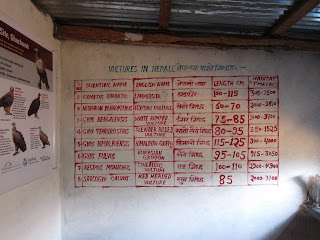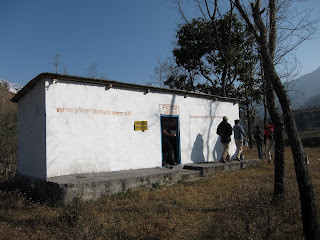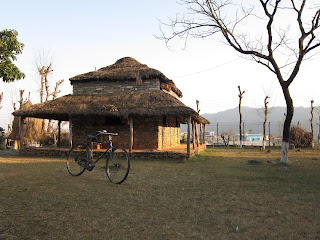The day before I left Pokhara, I headed out on the bus for Begnas Lake. The day before I had a great flight and felt that was a nice finishing note for the flying part of the trip. I had kind of envied my cohorts who landed out and got to hike around the countryside and hop buses home. I'd had Begnas Lake in the back of my mind since Matt mentioned it at breakfast one day. My goal: get out of Pokhara, walk a lot, see some countryside, maybe talk to some people.

Getting off the bus, the driver pointed me toward the lake. When I asked him about Rupa Lake, he waved the opposite way up the hill out off the main square. At the edge of Begnas Lake there were crowds of teens walking the path and a throng of cheering elementary kids waiting to get into boats for a paddle. It was loud and didn't feel like where I wanted to be. I quickly turned around, walked back through town and started walking up the other road. Ahhh, quiet.

After walking up the road awhile, I wondered if there might be a foot path I could take instead. There wasn't a lot of traffic, but I couldn't see the lake and, well, I was walking on a road. I followed the next path I saw, hoping it wouldn't just end at someone's front door. A few yards off the road, the path connected with a stone foot path. Success! Not far up the path, I encountered a beautiful little brick temple.

From the temple, I could see the lake and the Himalayas in the distance. Beautiful spot. As I walked around taking pictures, I was approached by a man who had just pulled up on a motorcycle. Ends up, he was the most recent past mayor of Pokhara. We would have talked longer, but he got a cell call that his meeting was about to start and off he went. He did give me his card so I could call if I ran into any problems.


I stopped and sat at the edge of the path to eat my sandwich at a spot where I could see the lake and the mountains. The birds were calling back and forth, I could see a boat paddling in the lake below. This was the view from my perch.

At some point, my path intersected again with the road. I ran into a man at a Y in the road. He asked where I was going. When I explained that I didn't really have a destination, he said, "Oh, you're wander walking." Exactly. I started walking down toward Rupa Lake--definitely the right choice. The fields at the edge of the lake were greener than green and dotted with people and water buffalo.

Whew, it was warm and I'd been hiking around for hours. I needed a cup of tea. The sign for Dinah's Guesthouse said I should stop in even if it was just for a cup of tea. I took them up on the offer. The owner and I shared some Masala tea and chatted. When I had finished my tea, he asked if I wanted to see his garden. He had coffee trees, banana trees, a veggie garden and a water buffalo. The day was just what I needed. It made me want to revisit Nepal with more time so I could trek and fly.

























































